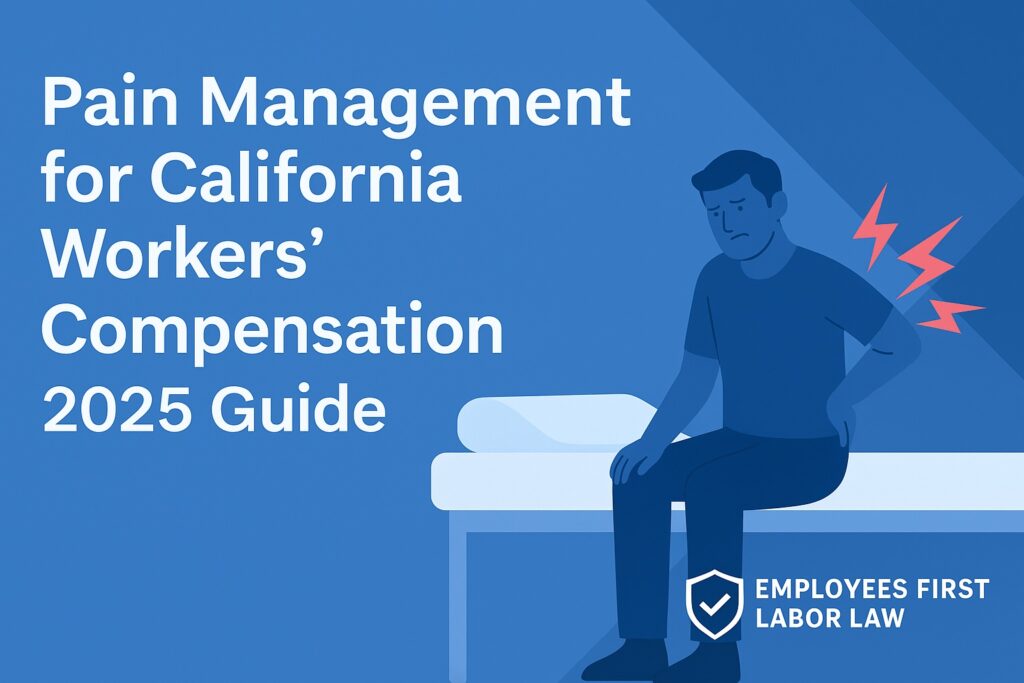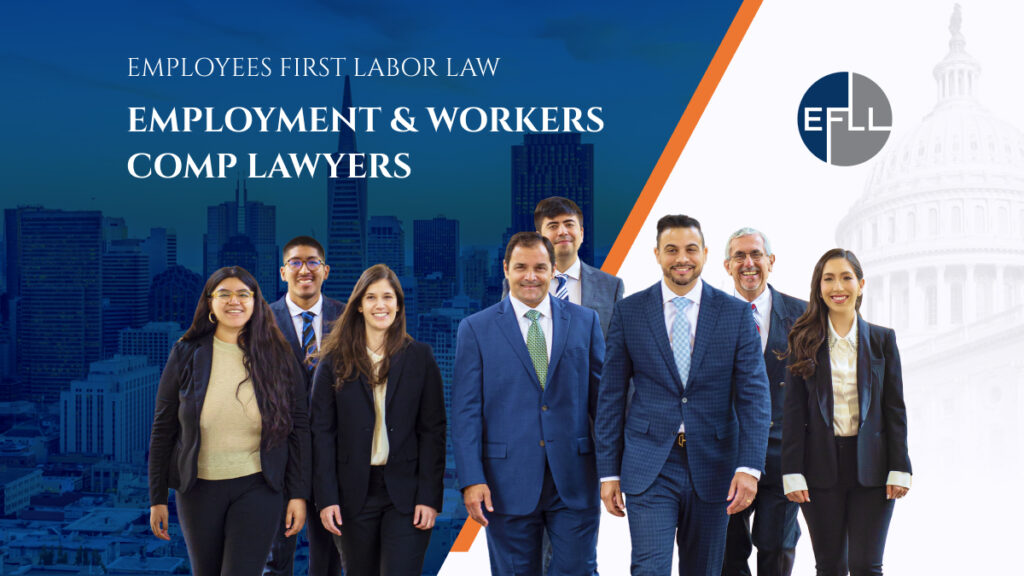
Why Pain Management Is Crucial in Workers’ Compensation Cases
Pain is one of the most commonly reported symptoms after a workplace injury. For many injured workers in California, pain can become chronic, debilitating, and a major barrier to returning to work. Yet managing pain within the workers’ compensation system requires strict adherence to California’s Medical Treatment Utilization Schedule (MTUS), which governs the type of care an injured worker is entitled to receive.
In 2025, the rules surrounding pain management in workers’ compensation have been updated. New guidelines adopted by the California Division of Workers’ Compensation (DWC) outline the most effective, legally compliant approaches to managing both acute and chronic pain—while discouraging outdated or unproven treatments.
At Employees First Labor Law (EFLL), we help injured workers navigate these evolving standards to get the care they deserve while protecting their legal rights.
2025 Updates to California’s Pain Management Guidelines
California law mandates that all workers’ comp treatment be consistent with the Medical Treatment Utilization Schedule (MTUS). In 2025, the MTUS has incorporated two major updates relevant to pain management:
1. Updated Chronic Pain Guidelines (ACOEM – December 19, 2024)
The updated guidelines define how to treat chronic pain (lasting longer than 3 months) using evidence-based, non-opioid methods. It provides direction on:
- Complex regional pain syndrome (CRPS)
- Neuropathic pain
- Fibromyalgia
- Co-existing psychological conditions (e.g., depression, PTSD)
These guidelines emphasize functional restoration, cognitive behavioral therapy (CBT), physical rehabilitation, and non-addictive medications such as topical NSAIDs, anticonvulsants, and antidepressants.
2. New Cannabis Treatment Guidelines (ACOEM – January 28, 2025)
California has now formally adopted cannabis-specific guidelines that:
- Do not recommend the use of cannabis for any type of work-related pain (acute, subacute, chronic, postoperative)
- Prohibit cannabis use in safety-sensitive roles
- Clarify that cannabinoids are not appropriate as first-line or supportive treatments under the MTUS
In short: cannabis is no longer an accepted treatment modality in workers’ comp pain cases in California, regardless of its legality or prior off-label use.
What Pain Management Treatments Are Allowed in 2025?
Under the updated MTUS, multimodal, non-opioid care is preferred. These include:
- Topical NSAIDs (e.g., diclofenac)
- Tricyclic antidepressants (e.g., amitriptyline) for neuropathic pain
- Anticonvulsants (e.g., gabapentin, pregabalin)
- Behavioral health therapies, such as CBT or biofeedback
- Functional restoration programs, combining physical therapy, psych support, and education
- Work conditioning/work hardening programs
- Acupuncture and spinal manipulation (when supported by functional goals)
Opioid medications, while not entirely banned, are highly restricted and generally only permitted:
- When all non-opioid options have failed
- With documented functional improvement
- Under strict monitoring and tapering plans
Treatments That May Be Denied or Delayed
Injured workers often face treatment denials due to outdated or non-compliant pain care requests. Under the new 2025 rules, the following treatments are more likely to be denied:
- Long-term opioid prescriptions without evidence of improvement
- Medical marijuana or CBD products
- Unjustified spinal surgery
- Repetitive or extended use of epidural steroid injections
- “Passive” treatments (e.g., massage) with no functional goals
- Outdated or non-standard medications
If you’ve been denied treatment, EFLL can challenge that denial through a Utilization Review (UR) appeal or Independent Medical Review (IMR).
Common Questions About Pain Management in California Workers’ Comp
Q: Can I use medical marijuana for my work injury?
A: No. In 2025, cannabis is explicitly not recommended under MTUS. Even with a doctor’s prescription, it is not considered “reasonable and necessary” under California workers’ comp law.
Q: What if my pain is still severe after months of treatment?
A: You may qualify for a chronic pain diagnosis, which opens the door to functional restoration programs, psychology referrals, and second-opinion evaluations.
Q: Who decides what pain treatments I get?
A: Your treating physician submits Requests for Authorization (RFAs), but those are subject to UR and IMR review. EFLL can help ensure these requests are written in compliance with the MTUS to avoid unnecessary denials.
Q: Can I sue if my pain is being ignored or denied?
A: You may not be able to sue for damages, but you can file for hearings at the Workers’ Compensation Appeals Board (WCAB), pursue treatment denials through IMR, or allege bad faith if delays are egregious. EFLL can help with all of these options.
How EFLL Helps with Pain Management Cases
At EFLL, we work closely with clients who suffer from moderate to severe pain and struggle to get the care they need. We:
- Coordinate with treating physicians to draft persuasive RFAs
- Challenge denials through UR and IMR appeals
- Refer clients to pain specialists who understand the MTUS
- Monitor treatment delays and push for accountability
- Build medical-legal evidence for disability ratings, MMI, and future medical care
If you’re dealing with daily pain from a workplace injury and you’re not getting proper treatment, call us. You shouldn’t have to suffer just because the system is complicated.
Tips for Navigating Pain Management in 2025
- Document all symptoms: Keep a pain journal and share it with your doctor.
- Ask for alternative care: Push for non-opioid, MTUS-approved modalities like PT, CBT, or nerve blocks.
- Avoid cannabis use during your claim: It may be legal—but it’s not covered.
- Request a second opinion: If your pain isn’t improving, ask your attorney to coordinate a Qualified Medical Evaluator (QME).
- Stay consistent with appointments: Missed visits are often used to justify treatment denials.

Final Thoughts
Pain is real. And for many injured workers, it’s the biggest barrier to healing. In 2025, California workers’ comp pain management is becoming more evidence-based, more regulated, and—ideally—more effective. But that only works if your rights are enforced and your care is aligned with the latest standards.
At Employees First Labor Law, we know how to navigate the system, challenge unfair denials, and get our clients the treatment they need to heal and move forward.



